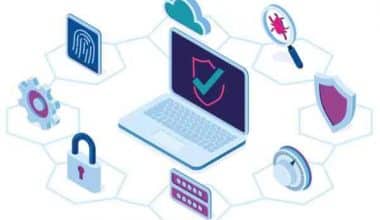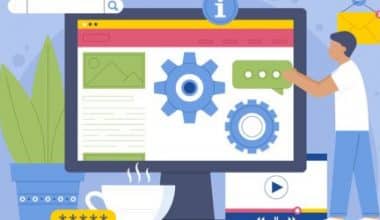The effectiveness of an organization’s workforce significantly impacts that organization’s success. Therefore, all businesses strive to maintain an ideal working environment that allows employees to do their jobs in a secure, cozy, and healthy setting. It’s essential for business owners to keep track of and keep an eye on their staff’s computers to stop possible virus attacks, hacking attempts, or the downloading of dangerous content. Several software companies now sell computer monitoring software, which is good for business. You can buy this software and use it in your business.
Computer-monitoring software watches what your employees see on their screens and gives you reports or live videos based on what they do. Due to the large number of employees who work from home or other places, monitoring technologies have become even more important. In this article, we will talk about computer monitoring software for office management and families.
Monitoring Computer Software Productivity
Companies that have adopted hybrid and remote work strategies in the past few years like to use computer monitoring software.
It keeps tabs on and monitors your staff members’ productivity levels, how they use their working hours, the projects they are engaged in, etc. This gives you accurate information about how a worker is doing, no matter where they are based.
The top computer monitoring programs for tracking productivity are listed below:
#1. Time Doctor
Time Doctor is a potent productivity tool and computer monitoring software favored by many big corporations like Ericsson and tiny companies like Thrive Market.
It has a complete set of functions, such as tracking time in detail, keeping an eye on computers in an effective way, and giving detailed reports.
Key Elements:
The Time Doctor’s best qualities include the following:
- Time Doctor provides a very adaptable and user-friendly time tracker.
- It is possible to track time manually or automatically with this remote monitoring tool.
- Your employee can start the tracker when they start working and stop it when they finish or need a break, in interactive or manual mode.
#2. Hubstaff
Hubstaff is a software program for cooperation and activity tracking.
Along with GPS tracking, it automates tedious administrative tasks like billing, reports, etc., and keeps an eye on how well your remote staff is doing their jobs.
Key Elements:
- Produce productivity reports using GPS-based timekeeping tools.
- Examine, reject, or accept timesheets and activity reports.
- Automate scheduling, time-off requests, and attendance to streamline work administration.
- Take images of employee screens to track online and app activity.
#3. DeskTime
DeskTime is a tool for keeping track of how productive employees are. It has features like calculating overtime, spreadsheets, detailed work reports, etc., that make it easy to keep track of simple activities.
Software for Monitoring Computer Activity
Reports that have adopted hybrid and remote work strategies in the past few pandemic years like to use computer monitoring software.
It keeps tabs on and monitors your staff members’ productivity levels, how they use their working hours, the projects they are engaged in, etc. This gives you accurate information about how a worker is doing, no matter where they are based.
But which one should you choose from the thousands of computer monitoring programs that are currently available?
#1. Pivotal Tracker
instantly gives you a visual snapshot of the total productivity of your team. The free version of the employee monitoring software lets you use the core features as much as you want and gives you as many read-only seats as possible. Still, you can only use it with five teams and five projects. n on burnup, cumulative flow, and cycle time is shown on the project summary page.
Pivotal Tracker not only gives you a birds-eye perspective but lets you dig down into any of the reports to get a closer look at workflows. This results in the identification and removal of bottlenecks at the cellular level. Slack, Zendesk, and Zapier are just a few of the business applications that Pivotal Tracker works with.
#2. ActivTrak
The activity dashboard of ActivTrak automatically sorts websites and apps into groups based on how people use them. The Free for All plan can support up to three users and has a 30-day data history retention limit. Some of the reports with the free plan are about productivity, the top apps used, the top websites visited, the top users, and the top categories.
#3. The ActiveCollab
ActiveCollab’s computer monitoring program tries to make the best use of resources and make it easier for teams to work together. The user activity monitoring program gathers behavioral information at the workstations under observation. Salesforce Sales Cloud, Slack, Microsoft Teams, Zendesk, and Jira are just a few of the services that ActivTrak integrates with.
The ActiveCollab computer monitoring program seeks to optimize resource management and enhance team collaboration. The free edition offers 1GB of storage, unlimited projects, unlimited tasks, conversations and notes, task assignees, and task dependencies, but it is only good for three users simultaneously.
ActiveCollab lets you import projects from other apps and offers automated work scheduling. This software keeps track of how staff members use their time, improving the effectiveness and efficiency of project management. It is simple to interface with Basecamp, Asana, Trello, and Wrike.
#4. RescueTime
is a computer program that lets you track how your employees use their computers and other devices. The free “Lite” plan includes all of the platform’s essential features. Users of RescueTime can monitor how much time an employee spends on each website and app.
These apps can be categorized as productive or unproductive using the available tools. You can establish objectives for how much time should be spent on each category so that you have complete control. You get a weekly report and keep your numbers for two weeks with the free plan. In addition to other business apps, RescueTime has connections with Google Calendar, Zapier, Slack, and GitHub.
Computer Monitoring Software for Parents
Kids manage to utilize our Windows laptops even though they spend most of their time on their iPhones. Over a few months, you must have tried more than 50 high-end parental control tools to allow kids the flexibility to use these gadgets while still being responsible parents. Even some of the “popular” ones astonished me at how many there were that weren’t particularly good.
All of the programs are Windows-compatible, but the ones I suggest also have excellent mobile apps. I like that it works on different platforms because it lets me use just one program to watch my family’s devices.
Compared to the other parental control apps I’ve used, Bark is a little unique. Monitoring social media is its main objective. It is compatible with more than 30 major social networks and will keep an eye on the conversations, posts, and photographs at the account level. This implies that Bark can understand what is being said, thanks to clever AI keywords, emoji, and slang detection, whether the kids are communicating on the web, phone, or tablet.
You can use the web filter to stop your kids from going to certain websites and large groups of websites. These included websites celebrating sex, drugs, and violence in their writing and imagery. I may select a “bedtime” when the internet is restricted, thanks to the screen time management capabilities. Even though I can still make and receive calls on the phone, I am at least relieved that my children aren’t spending the entire night curled up in bed watching YouTube videos.
#2. Mobicip: Age-based Screen Time Limits and a Default Web Filter
I discovered Mobicip for Windows to be a user-friendly parental control program. After downloading and installing the program on the computer, you could set up filters and keep an eye on everything that was going on online from afar.
The web filter is based on 18 categories and is enabled by default. Age-appropriate categories are banned. You can make some changes based on your child’s personality and how they browse the web. Later, you can add URLs that were blocked to the block list even though the category filter would have let them through.
#3. AI-Powered Web Filtering with Net Nanny
The Net Nanny web filter has a feature that you would truly appreciate: instead of just blocking words (unless I tell it to), it takes context into account. So, the “Sex” recommendations didn’t stop it from happening if, for example, my kid was looking up a recipe for chicken breast.
You can create unique profiles for each child and require them to sign in each time they use the computer. I created a thorough timetable and a daily screen time restriction in this way. I like that I could use the parent dashboard to ban the internet anytime and anywhere.
Monitoring Computer Performance
Even though many apps and built-in tools can help you get more done on your PC, it’s important first to understand your technology and how to use it.
If you have a more powerful computer that is only rarely used or is only used for certain tasks, for instance, you can manage more passively. It makes sense that your device will be less vulnerable to outside attacks if you don’t have a working internet connection.
In either case, the best way to ensure that a PC keeps working and running well is to do something about it. Thankfully, there are various ways to do this, including using background programs like virus scanners and something as basic as a Windows management tool like Task Manager.
If you’ve been using PCs for a long time, you’re likely already know how to use the performance control tools in Windows. Disk Cleanup and Task Manager, two of the most well-known and easy-to-use examples, are still in the most recent versions of Windows 10.
#1. Use Disk Cleanup to remove Unnecessary Files
Disk Cleanup is meant to give you some of the best tools you can find in management software and freeware like Spybot Search and Destroy.
With Disk Cleanup, you can quickly look for and eliminate temporary and unnecessary files that build up as you use the Internet, update software, and do other things. Simply choose a drive to scan, then pick the items you want to remove.
Disk cleanup should be executed regularly to remove temporary junk from your computer and prevent long-term accumulation.
#2. Accessing the Performance Tab and Task Manager
Task Manager is another powerful tool you may already know from earlier versions of Windows. It functions as a “heads-up” for your system performance and has many tabs and settings for keeping track of and managing performance.
Simply perform a search for the program and launch it in Windows 10 like you would any other program. In a pinch, you can also use the keyboard shortcut Ctrl + Alt + Del to get to the Task Manager. You’ll probably need to click through a prompt if you’re visiting the program for the first time to see the complete version.
#3. Using the Processors tab, manage specific applications and Tasks
In the advanced mode of Task Manager, the Processes tab is next to the Performance tab. This lets you see which programs and processes take up most of your computer’s resources.
Also, the tab has a list that can help you find and stop anything that seems to be using more power than it should. Using the advanced mode, the details about each task will be less clear.
The CPU, RAM, and disk consumption on your PC should typically be quite minimal. You’ve probably uncovered your issue if one application controls your consumption. These statistics should ideally only increase during challenging jobs.
Monitoring Computer Temperature
One of the best things you can do to maintain your Windows PC is to monitor the CPU temperature. You can help with this by using contemporary CPU temperature monitoring software.
But why do you need to monitor computer temperature?
The fact is, every PC produces heat. It can only withstand so much heat before the hardware starts to malfunction. The PC has numerous components, including a motherboard, hard drive, and more, and while operating, it generates heat. Before a threshold, the heat is normal, but it might seriously harm the CPU if it isn’t controlled.
So, if the temperature rises unusually, you can face a sudden system shutdown. While working, you or the other employees can notice a slowdown in its performance. In the worst instance, heat could harm the CPU’s motherboard, essential chips, or other components.
You must use a CPU temperature monitoring program to monitor your computer CPU to prevent all of these and safeguard your system and its performance.
Let’s first gain a basic understanding of this tool, its importance, and who it is for before moving on to the finest CPU temperature monitors to take into account.
What Is A CPU Temperature Monitoring Tool?
CPU temperature monitors are software tools that provide precise information while checking the temperature of your CPU, voltage, fan speed, battery, and other components. You can prevent harm to your CPU by gathering these metrics from sensors.
Many helpful features are included with these tools, including:
- High levels of customization;
- Detailed information about the computer hardware;
- Real-time CPU temperature;
- The ability to evaluate bandwidth and utilization.
Use these tools by adhering to this easy procedure:
- Download and set up a CPU temperature monitoring program on your Windows desktop computer or laptop.
- Open it on your computer to view the temperature data.
Who Needs to Monitor CPU Temperature?
CPU temperature monitors are a useful tool for all computer users, including gamers and busy professionals. It’s because a variety of things, including using high-performance apps; fan speed; dust; malware attacks, viruses, Trojan horses, worms, etc., can make the CPU hotter. In particular, CPU temperature monitoring is helpful for
#1. Gamers
They play expensive video games, which necessitate powerful computers. So the temperature may rise while kids play video games. Gamers also upgrade some components to increase their power and overclock their computers to improve the performance of online games. The CPU temperature may increase as a result of these.
#2. Graphic Artists
Graphic designers need powerful computers to complete their work quickly, much like gamers.
#3. Professionals
People who work on computers for long periods often notice their PCs getting warm. They might also come across worms from the internet, networks, or emails, Trojans like Rootkit and backdoors, and viruses like file and system infectors and macros. Any of these can cause the CPU to become hotter.
Conclusion
Your PC might suffer serious damage from high temperatures. Dust, infections, playing expensive video games, or other time-consuming tasks could all be to blame. In any case, take care of your computer using the best CPU temperature monitoring program to keep the CPU from overheating, enhancing its functionality, dependability, and lifespan.
Related Articles
- REMOTE MONITORING: What It Is, Application and Jobs
- BUSINESS CELL PHONES: Reviews and Best Cell Phone List for Business Owners (Updated)
- COMPUTER ANALYST: Job Description & Salary
- SOFTWARE MANAGEMENT SYSTEMS: Types, Features, and Examples
- MICROSOFT LOGO: History, Meaning, Evolution, Best Trademark Practices






